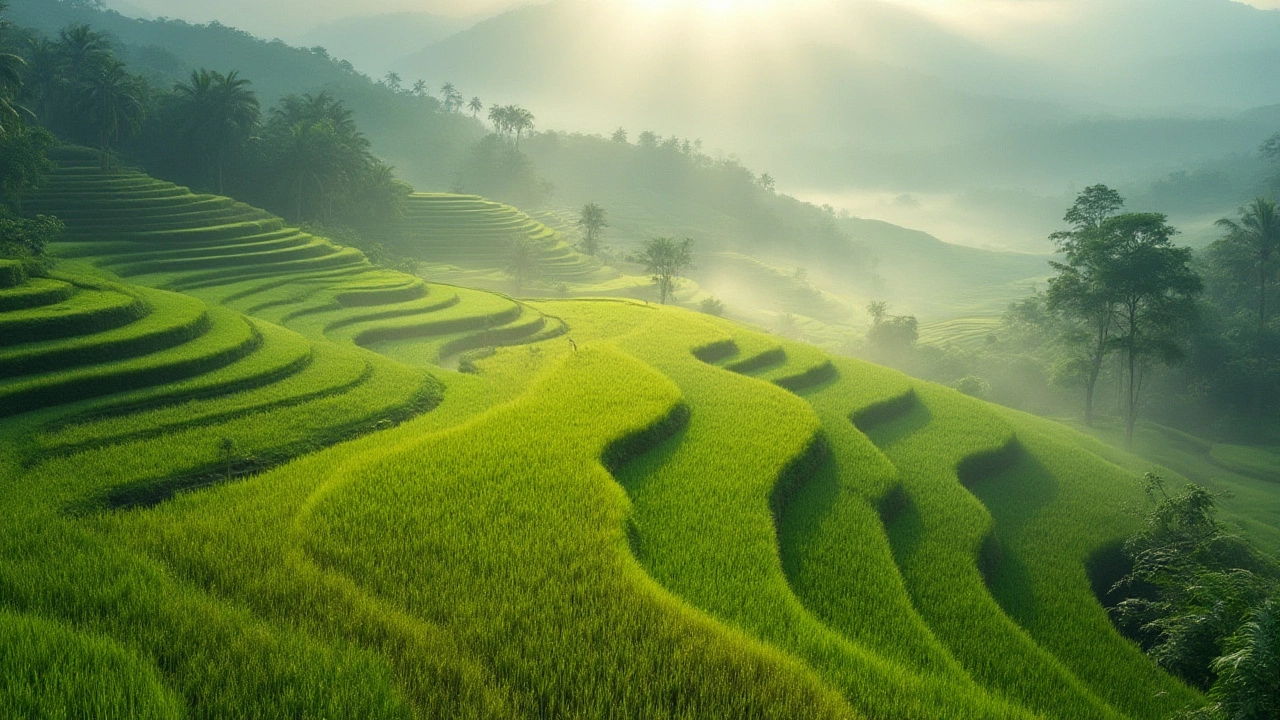Discover which landscapes give rice the best chance to thrive. Explore proven facts on topography, water management, and land tips to boost your rice harvests.
Rice Field Elevation: Why It Matters for Indian Farmers and Gardeners
When you think about growing rice, you probably imagine flooded fields—but rice field elevation, the height difference between fields and water sources that controls how water flows and stays in place. It’s not just about water depth—it’s about control. In India, where monsoons can flood crops one month and droughts parch them the next, getting elevation right makes the difference between a harvest and a loss. Farmers don’t guess at this. They measure it. They level land with simple tools or laser-guided graders. They build small bunds to hold water where it’s needed and let it drain where it isn’t.
Irrigation, the system of moving water to crops depends entirely on elevation. If your field is too high, water won’t reach it without pumps. Too low, and it turns into a swamp. Soil drainage, how quickly water moves through the ground plays into this too. Clay-heavy soils in Punjab or Tamil Nadu hold water longer, so elevation must be adjusted to avoid root rot. Sandy soils in Andhra or Odisha drain fast, so fields need to be slightly lower to keep moisture long enough for rice to thrive.
It’s not just about water. Water management, the practice of controlling when, how much, and where water goes is the backbone of sustainable rice farming. In places like West Bengal, where farmers grow three crops a year, elevation helps them rotate water between fields without wasting it. In hilly regions like Uttarakhand, terraced fields use natural elevation to let water cascade down from one plot to the next—no pumps, no electricity, just smart design.
And here’s what most beginners miss: elevation isn’t just for big farms. Even small-scale gardeners growing rice in containers or raised beds need to think about it. A pot tilted just 2 degrees can drain too fast. A raised bed built too high might dry out before the rice reaches knee height. The same rules apply, no matter the size.
What you’ll find in the posts below aren’t theories. They’re real fixes from Indian farmers who’ve learned this the hard way. You’ll see how one farmer in Maharashtra saved his crop by raising his field by just 6 inches. How another in Kerala cut water use by 40% by reshaping his land’s slope. How someone in Punjab stopped fungal outbreaks just by improving drainage through elevation tweaks. These aren’t high-tech solutions. They’re simple, low-cost, and proven.
Whether you’re managing a 10-acre plot or a single balcony pot, understanding rice field elevation means you’re no longer fighting nature—you’re working with it. And that’s where good farming starts.
